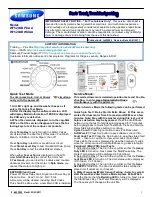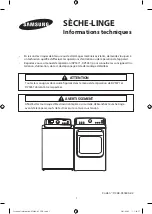
Freeze-dryer Alpha 3-4 LSCbasic
2 Layout and mode of operation
Version 11/2018, Rev. 1.9 of 01/12/2021
• sb
23 / 117
Translation of the original operating manuel
The required drying time depends strongly on the drying vacuum. At 1.0
mbar, one gram of ice takes up a volume of 1 m
3
of vapour, at 0.1 mbar a
volume of 10 m
3
of vapour, and at 0.001 mbar a volume of 100 m
3
. The
closer the vacuum is to the solidification point, the smaller is the resulting
vapour volume. The drying rate increases and the drying time decreases.
Pos : 34 / 010 U nivers almodule/ Leerz eile @ 0\m od_1202116244500_0. doc x @ 114 @ @ 1
Pos : 35 / 200 C hrist/ 360 GT-BA Labor-Pilot (ST ANDARDM ODU LE)/ 020 Auf bau und Wirk ungsw eise/020-0020-0020- 0040 Nac htr ock nung @ 25\m od_1404983260310_68.docx @ 183131 @ 4 @ 1
→
2.2.2.4
Final drying
Final drying is an option whenever one requires a product with minimal
residual moisture. In the physical sense, this process is a desorption
process, i.e. the removal of adsorptively bound water. Final drying is
performed under the lowest possible final pressure that depends on the ice
condenser temperature in accordance with the vapour pressure curve for
ice and water as well as on the final vacuum of the vacuum pump that is
used. The process is supported by a higher shelf temperature.
Pos : 36 / 010 U nivers almodule/ Leerz eile @ 0\m od_1202116244500_0. doc x @ 114 @ @ 1
Pos : 37 / 200 C hrist/ 361 GT-BA Labor-Pilot (PR OJEKT E)/Al pha/ Alpha 1-4_2- 4_3-4 Standard/Al pha 3-4 LSC basic /020 Auf bau und Wirkungsweis e/ 020- 0020-0020-0050 Tr ock nungsende und Belüft ung Alpha 3-4 LSC basic @ 61\mod_1541066105865_68. docx @ 602568 @ 4 @ 1
→
2.2.2.5
End of drying and aeration
Another indication of the end of the drying process is the behaviour of the
vacuum and of the ice condenser temperature. The ice condenser is no
longer subject to load and reaches the final temperature of approximately
-105°C. The pressure in the drying chamber decreases in accordance with
the ice condenser temperature.
The vacuum pump will be switched off and the drying chamber will be
aerated via a rubber valve or via the aeration valve. The aeration valve can
also be used to flood the unit with nitrogen or another inert gas instead of
ambient air.
Then, the product can be removed from the unit.
Pos : 38 / 010 U nivers almodule/ Leerz eile @ 0\m od_1202116244500_0. doc x @ 114 @ @ 1
Pos : 39 / 200 C hrist/ 361 GT-BA Labor-Pilot (PR OJEKT E)/Al pha/ Alpha 1-4_2- 4_3-4 Standard/Al pha 3-4 LSC basic /020 Auf bau und Wirkungsweis e/ 020- 0020-0020-0061 Abtauen H eißgas Al pha 3-4 LSC basic @ 67\m od_1568352049844_68. docx @ 716768 @ 4 @ 1
→
2.2.2.6
Defrosting
Defrosting with hot gas
As standard, the freeze-dryer is equipped with a hot-gas defrosting system.
In order to defrost the ice condenser, heated refrigerant is fed through the
heating coil.
In order to avoid damage, the condensate must be drained off through the
media drain valve directly after the completion of the defrosting process.
Then, any residual water must be removed from the ice condenser
chamber by way of a cloth.
Pos : 40 / 010 U nivers almodule/ Absc hnit tsw echs el @ 0\m od_1202124514062_0.docx @ 418 @ @ 1
Pos : 41 / 010 U nivers almodule/ Seitenw ec hsel @ 0\m od_1202116244312_0. docx @ 105 @ @ 1
















































